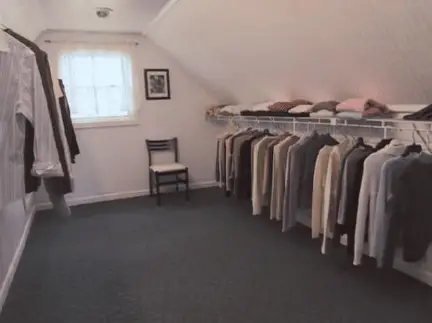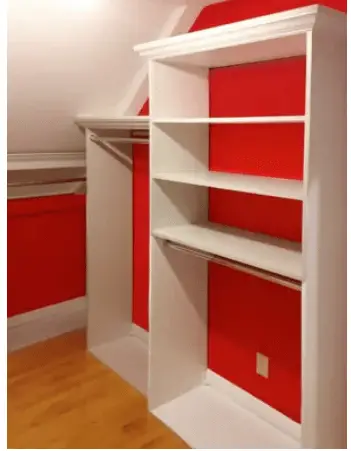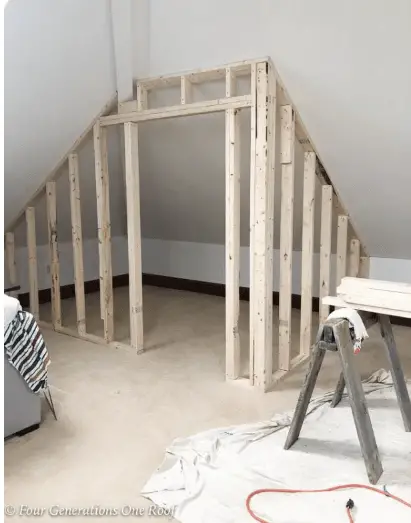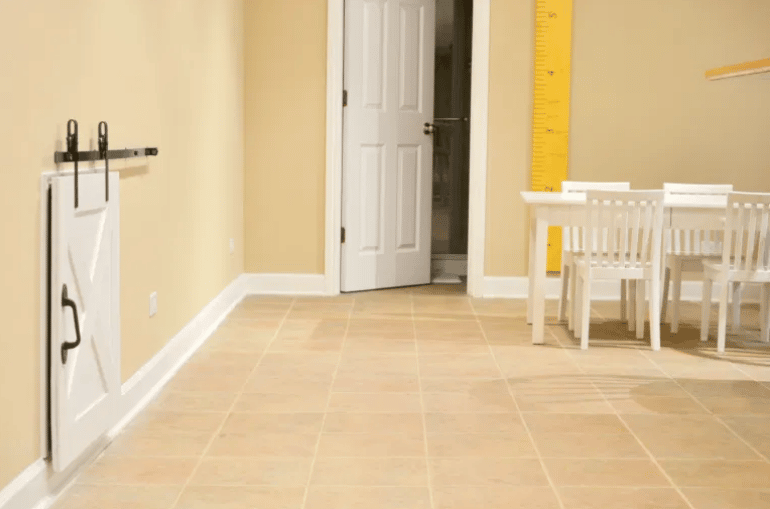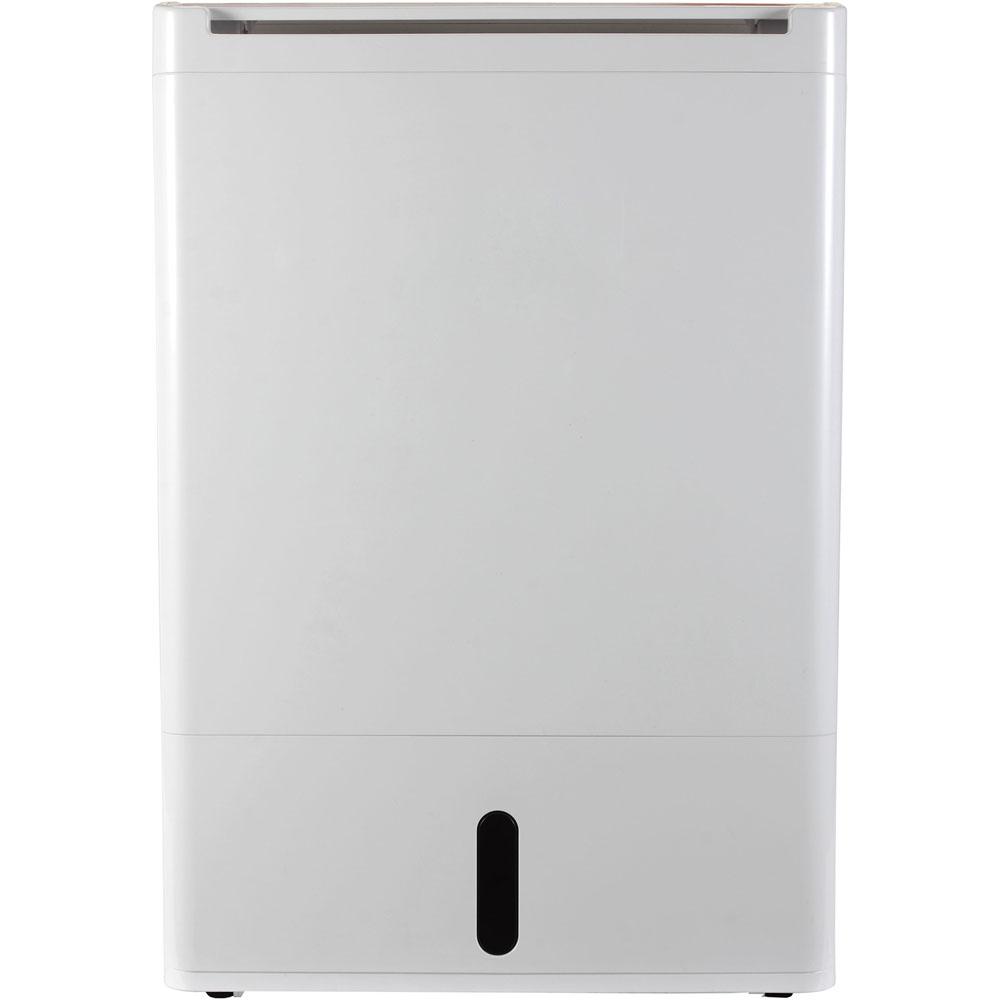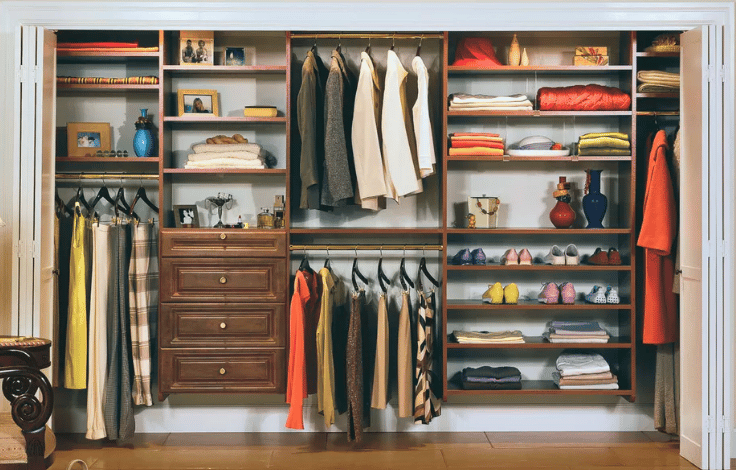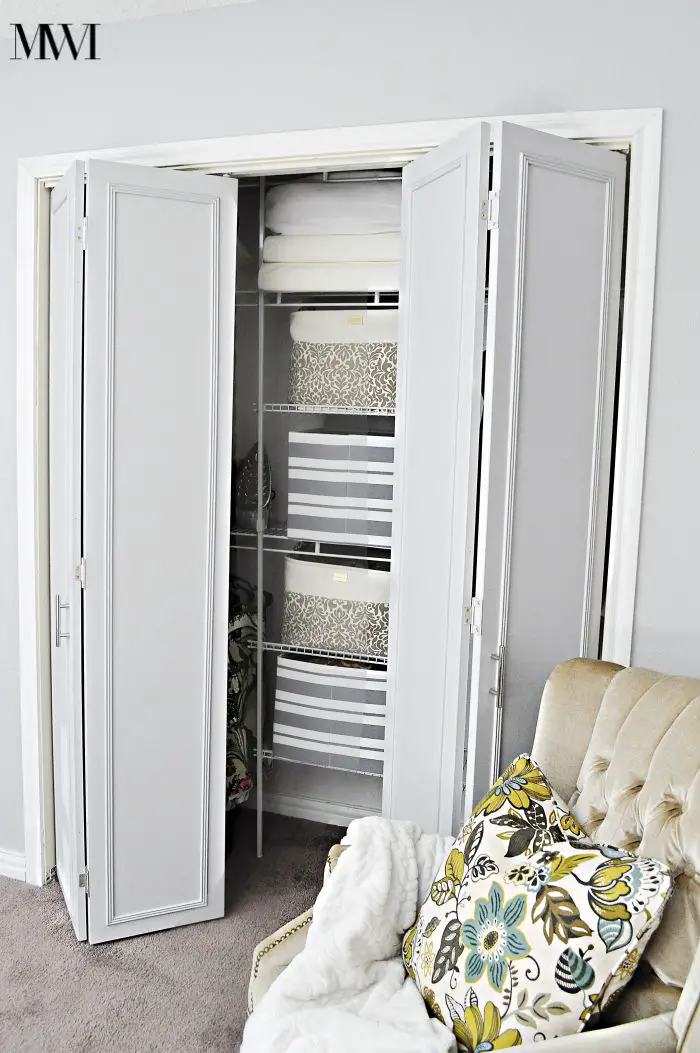You’re running out of space in the house, and you need more storage. It’s time to make use of the “Last Frontier” of your home: the attic. Designing an attic closet can seem intimidating if you’re not sure where to begin. Luckily, there are plenty of tutorials, and we’ve got plenty of Attic Closet Ideas to make a functional closet for your home or attic apartment.
1) Totes
If your attic has some bug, rodent, or mildew issue you still need to work out, make sure to protect your closet items in the meantime. Hard plastic totes are a great way to store things that you don’t use as often, such as winter clothes that hide in the back of the closet. You can use the shorter areas of a sloped attic space to tuck totes away so that you won’t waste any usable closet space, or get a tote like this that’s easy to open so that you can use it for everyday items.
2) Ladder
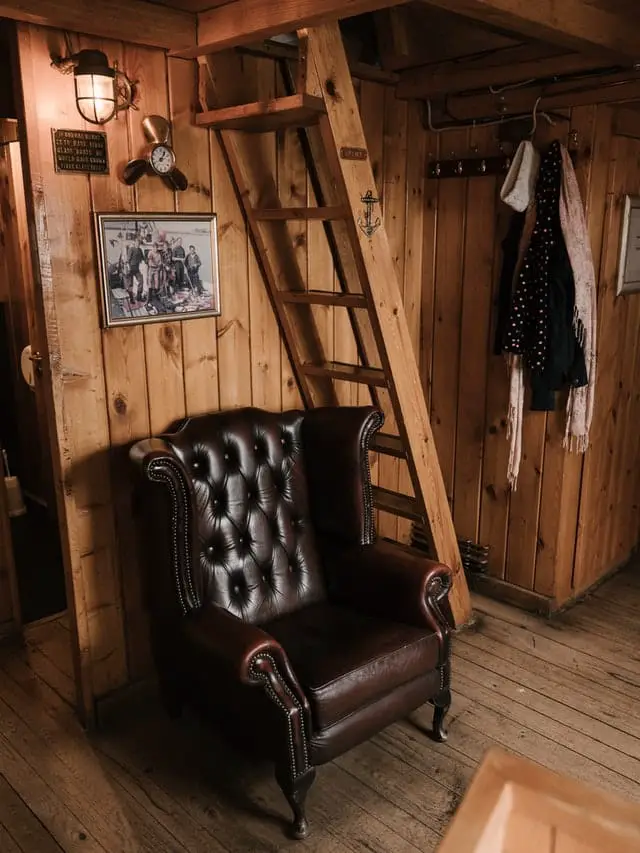
An attic is an unusual space for a closet, so have fun with it! If you’re building the storage space for your children or if you want a fun access point, use a ladder-like this to get to your closet from below. You can still add a regular door from the adjacent attic so that you can access the area comfortably, but a ladder is a neat way for an adult or kid to access a closet.
3) DIY Custom Doors
An attic closet generally has a slanted ceiling, at least, and this can take up a lot of your potential closet room. You’ll want to make the most of the space, so building a door to fit the attic’s shape is important, This way, you don’t waste space because you don’t have an easy way to reach it. Watch this video by SSLFamilyDad to learn how you can fit your entrance to the available space.
4) Walk-In
You may not be looking to build a small attic space closet. Maybe you want to turn the whole attic into one big closet. Luckily, HGTV has an idea for that. If you have an unfinished attic that you want to make into a walk-in closet, you can use the steps in this HGTV article to finish and furnish the area. If you’re new at DIY and home improvement, you might want a professional, or you might need to research the individual steps to do them correctly.
5) Compensate For Ceiling Heights
The biggest issue you’re likely to run into with an attic closet is that the ceiling won’t be flat. Instead, you probably have a sloped ceiling, and you probably chose to put the room near the edge of the attic, where the effect is even more noticeable. This article from Closet Works has helpful information on how their experts would arrange closets in that less-than-ideal space. Decide whether you’re more worried about fitting as much as possible, organizing well, or having it look nice, then check out their article to see how you can compensate for the short ceiling.
6) Plastic
If your attic is barely finished, or if the closet is next to an unfinished attic, you’ll have to consider possible issues with moisture and dust. This is most important for clothes and shoes you don’t wear often, but you might consider getting an organizer that will keep dust off and be accessible for everyday use. This shoe organizer from Amazon, for example, is designed for an interior closet, but it’ll keep dust off the shoes you don’t wear often while providing easy access to the shoes you wear a lot.
7) DIY Sliding Crate Storage
If you’re trying to make the most of a small attic space, you’re looking for space-saving ideas. This youtube video shows how Brad Rodriguez from Fix This Build That designed a small, awkward-shaped closet to get the most room from it. In the video, he builds a sliding crate storage system that keeps things organized so that you don’t end up with things scattered on the floor, as often happens with attic closets. The great thing about this tutorial is that you can see the effect in a narrow space, like the end of an attic space.
8) Many Small Totes
Totes are a great way to organize things. While the bottom totes in a stack are hard to access, they’re an effective way to keep things clean and organized. Instead of using several large, bulky, and probably heavy totes, get a set of smaller totes for better organization. These small totes from Amazon can fit a single pair of shoes or a short stack of clothes in each, and the transparent sides mean you can look for and find the exact thing you need quickly. They’re perfect for a closet you don’t use often or for seasonal clothing storage.
9) DIY Framing
Attics aren’t designed as usable space, though yours may have been built to withstand people walking on it. Before you try and finish your attic to build a closet, make sure it meets building codes for a finished attic since not all attics can support the weight of walls. If your attic can handle walls, you’ll need to build a space for your closet, but how do you plan a closet in such an awkward area? Check out this article by Jessica Bruno to learn how to frame out a closet in an attic for maximum usable space.
10) Clothes Rod
When you’re setting up your attic closet, you might wonder what you can do with the shorter space in the back. You can build a wall to make the back taller, but you’ll lose a lot of space. Check out this video from I Like To Make Stuff to see how you can use all your space . The video maker shows you how to add a clothing rod that takes up the shorter space in the back. This is a great way to use the space because you don’t have to custom fit shelves to the odd-shaped walls.
11) DIY Barn Door
It can be hard to figure out the best way to design a door for an odd closet space. You don’t want to use up a lot of space with a door that opens inward, but an outward-opening door might not fit your layout. Try making a sliding door using the instructions in this article so that you don’t have to account for an extra door opening into your living space. A barn door like this is easy to install, fits a rustic theme, and you don’t have to worry as much about the closet layout.
12) Dehumidifier
If your attic is damp, you’ll need to solve that problem before you can even consider putting in a closet. You don’t want your clothes or other items to get mold or mildew on them. A dehumidifier will keep moisture from damaging your clothes, and this one from The Home Depot can be used to dry laundry and reduce scents. That way, you can bring clothes upstairs before they’re fully dry and not worry about an increased chance of mildewing.
13) Plan Organization
How’re you going to organize your attic closet? Before you remake the existing space, you’ll want to answer this question. The first step to redoing a closet is to take everything out and think about what’ll go there. You can then plan your organizers and shelves based on your needs, rather than cluttering the space by getting organizers that don’t fit your needs. Planning is particularly important in an unusual-shaped area like an attic. After all, you don’t want to lose space because you didn’t account for the ceiling’s slope.
14) Motion Sensor Puck Light
Lighting can be difficult in a small closet, or one with a slanted ceiling. If you’re not sure how to put a light fixture in your closet without taking up unnecessary room, try a puck light like this one from Amazon. While it needs to be wired into the closet, the small profile means it won’t take up space in your closet. You can easily attach it to even a sloped ceiling to get enough light for your closet, and the motion sensor means you don’t have to find a place to put a light switch in a narrow area.
15) DIY Sliding Doors
Sliding doors are a convenient entrance design for attic closets in particular. As you add a new closet, you have to consider how a traditional door will take up space inside it when opened, or inside the room that the closet attaches to. With a sliding door, you can’t press furniture right against it, but overall, you can make better use of your space. The doors will never block other areas or sections of the closet like an open door might. Use this video from DoThingsMakeStuff to design your sliding doors.
16) Organize By Height

Designing your closet isn’t just about building, lighting, and furnishing it. Once you’ve got it furnished in the most attractive and efficient way possible, you’ll need to think about what you put where. Try organizing items by height if you have shelves against a sloped ceiling, like the owner of the bookshelf in this picture. If you have several things on a shelf, plan to have your taller items on the side that makes sense. This may even affect which side of the closet you place shelving on versus where you put a clothing rod.
17) Battery Puck Light
If your closet doesn’t have electricity, either because your attic doesn’t have it or because you didn’t want to rewire the room to add a closet, the one problem you’ll run into is a lack of light. Instead of doing without light, try getting a battery-powered puck light like this one from Amazon. It comes with rechargeable batteries, and since it has a motion sensor, you don’t have to worry about blocking light switches if you have a small attic space for the closet.
18) Garment Rack
If you’re not looking for a fancy attic closet, but are simply trying to find a way to make use of the space, a garment rack may be best for you. A stand like this one from Amazon will keep your clothes clean and covered if you don’t use the closet often, and the clear sides make it easy to find and access clothes. This also saves you the trouble of trying to figure out how and where to install a clothing rod and ensures that the clothing inside will be moisture- and dust-free.
19) Bi-Fold Doors
Folding doors are a common way to access closets, and attic closets are no different. They shorten the amount of space needed to open a door, making them ideal for any closet, and more so if you have a small attic or are otherwise working in a tight space. Unfortunately, bi-fold doors can become outdated or be unattractive, like any other functional decor. Instead of replacing them or choosing a less practical option for the sake of appearance, you can use this article from Monica Wants It to make new or old bifold doors look better.
20) Hanging Organizers
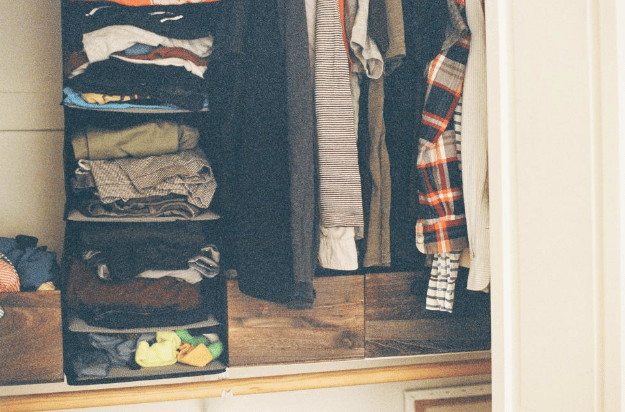
If your walls are sloped, you may have trouble figuring out how to add shelves and bookcases without wasting a lot of space. You can custom fit everything, but that will take a lot of time, effort, and know-how or the money to hire a contractor. Try using hanging organizers like the ones in this picture instead. You can easily place a clothing rod across one wall of the closet, and then hang anything you need from it, rather than trying to fit shelves using inadequate carpentry skills.
What’ve you done so far with your attic closet? Did one of these ideas seem right to you? We’d love to hear about it in the comments below!


